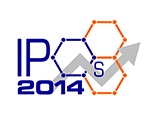 Auspex Pharmaceuticals just landed $35 million in venture and loan financing, but the orphan drug outfit has its sights set on $75.9 million more in an IPO, one of the first filings of the new year as biotechs look to stretch 2013's promise into Q1.
Auspex Pharmaceuticals just landed $35 million in venture and loan financing, but the orphan drug outfit has its sights set on $75.9 million more in an IPO, one of the first filings of the new year as biotechs look to stretch 2013's promise into Q1.
The La Jolla, CA, company is planning to sell 5.5 million shares at between $10 and $12 a piece, hoping to land on the Nasdaq under "ASPX." Auspex's lead candidate is SD-809, a VMAT-2 inhibitor for movement disorders. The company is in the midst of a Phase III trial on abnormal involuntary movements associated with Huntington's disease, planning to file with the FDA this year for a potential 2015 launch. At the same time, Auspex is plotting a Phase IIb trial of the drug in tardive dyskinesia and is about to launch a Phase Ib study to see whether SD-809 can treat tics associated with Tourette syndrome, the company said.
Meanwhile, the industry is watching closely to see whether the boiling market for IPOs that lined the pockets of more than 40 drugmakers last year can carry on into 2014. Auspex will join what is said to be a sizeable cast of biotechs queuing up for public offerings in the first quarter, and many at this week's J.P. Morgan Healthcare conference wondered whether bankers and investors would support many more debuts.
Of course, Auspex would prefer to be judged on its own merits, and the biotech believes its in-development compound has a chance to beat out its sole competitor and expand the market.
About 30,000 people have Huntington's disease in the U.S., and 90% of them suffer from abnormal involuntary movements, Auspex said in its S-1. Lundbeck's Xenazine is the the only FDA-approved treatment for those patients, but that drug's high rate of adverse events and multiple-times-per-day dosing regimen have constrained its adoption, Auspex said, and the company believes SD-809 can outstrip Xenazine's $238 million annual sales if approved.
Auspex plans to spend about $29 million of its prospective haul on getting SD-809 onto the market, setting $18 million for ongoing clinical development.
- read the filing